Impacted Canine Surgery
| Table of Contents | |
FREE Impacted tooth Surgery + FREE CT-Scan when you start braces or Invisalign with Dr. Kanaan at iSmile Specialists. Cash patients only.
What is an Impacted tooth?
When a tooth does not grow in the mouth and stays inside the bone, the tooth is impacted. Impacted teeth canine in adults and children are quite common and require immediate attention.
Usually, your dentist will discover them during the regular check-up visit.
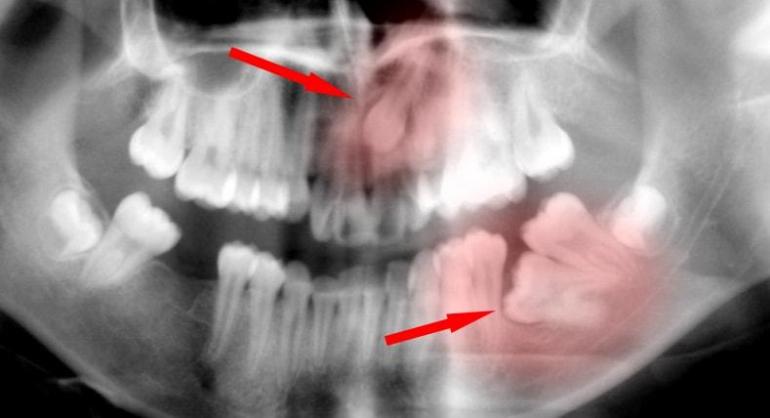
What is the cause of tooth impaction?
Genetic: Research has shown that genetics plays a significant role in teeth impaction, especially the maxillary canine palatal impaction.
Trauma to the baby tooth: Children love to play and with that comes different types of trauma like falling from a bicycle, Trampoline, hitting the pool curb, ...etc. When the trauma is directed to a baby tooth, this might move the developing tooth under it which will cause it to grow in the wrong direction.

- An extra tooth: Sometimes, we might develop an extra tooth in the location where the original tooth is supposed to come.
- This prevents the original tooth from coming and requires surgery to remove the extra tooth and bring the impacted tooth in.
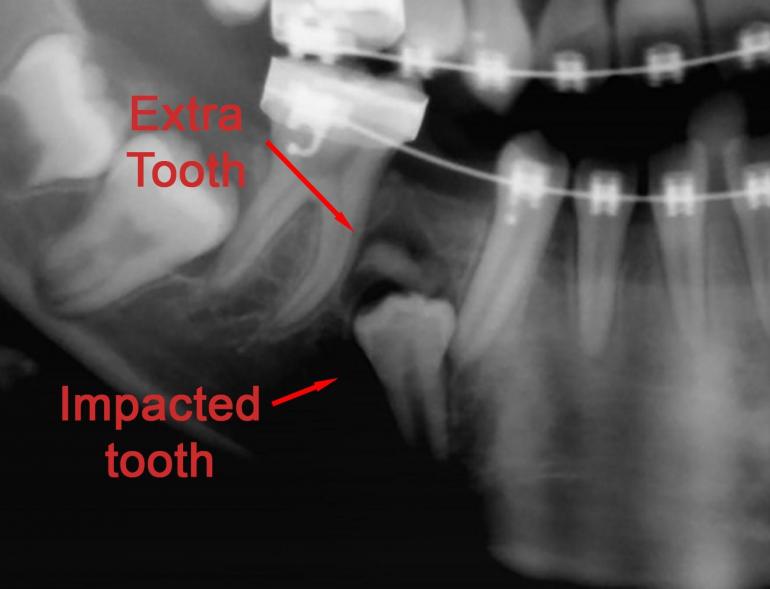
- Narrow jaw: This is common sense. When teeth don’t have enough room to grow in, they will get stuck inside the jaw causing an impaction problem. This is more common in children with allergies and mouth breathing as they will have a narrower upper jaw. Expansion is always needed in these cases.
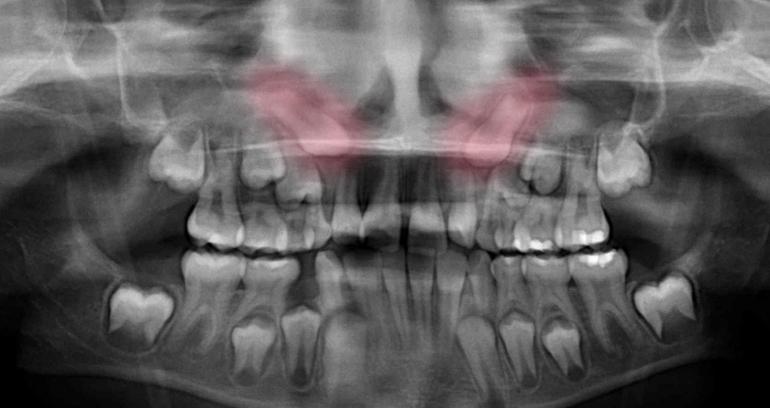
Why do we need to treat impacted teeth and impacted canines?
Teeth are supposed to be in the mouth, not the bone. If they stay in the bone, this can cause serious problems such as:
- Might cause damage to adjacent teeth: Impacted teeth can get aggressive causing damage to the bone, ligament, and tooth structure to the adjacent teeth.
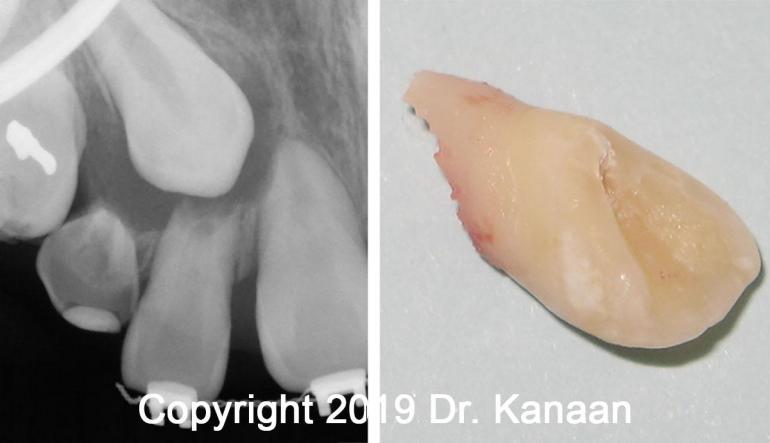
- Might get ankylosed and stuck to the bone. This will happen if the impacted tooth is left too long without treatment causing the surrounding bone to fuse with the tooth. Removing the impacted tooth becomes a challenge and will require a major bone graft to fill the void.
- Might develop into serious pathological conditions such as cyst formation, infection, and cancer. reference
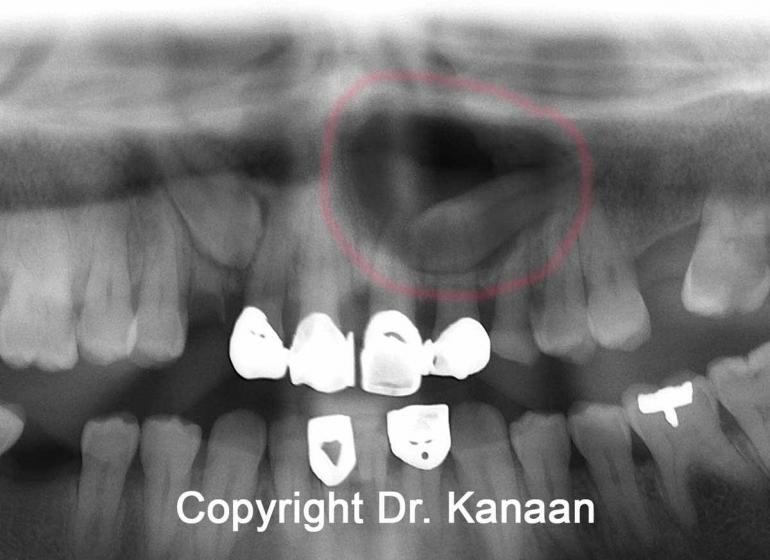
Why do I need to get an Impacted canine surgery?
The same way a tugboat needs a rope to tow a cargo ship, we need to hook an orthodontic rope “Gold chain” to the impacted tooth so we can tow it back its position.
This requires a special surgical procedure to uncover the impacted tooth and place the chain on the tooth. If there is bone covering the tooth, then it needs to be removed.

Can we prevent impacted canines from happening?
As always, an ounce of prevention is worth a pound of cure. The AAO recommends early orthodontic checkups no later than age 7 and to take at least one Panoramic x-ray before the age of 10. The Panoramic X-ray can give a general idea about the growth path of each tooth and Dr. Kanaan can make early intervention if needed. This includes:
- Removing the extra tooth if it is blocking another tooth from erupting.
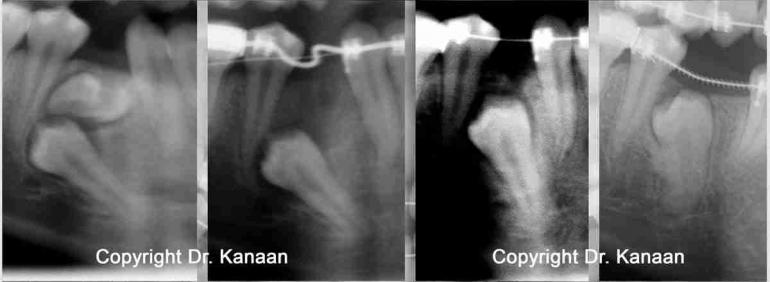
- Remove the corresponding baby tooth allowing the possible impacted canine to grow back into the right position. This is called self-correction and will only happen in growing children. After the age of 15-16, I have never observed this happening and surgery is always required to bring the tooth down. Reference
- Expand the jaw if the patient has a narrow jaw associated with impacted teeth. The expansion will create space and might eliminate the need for the surgery especially in actively growing children.
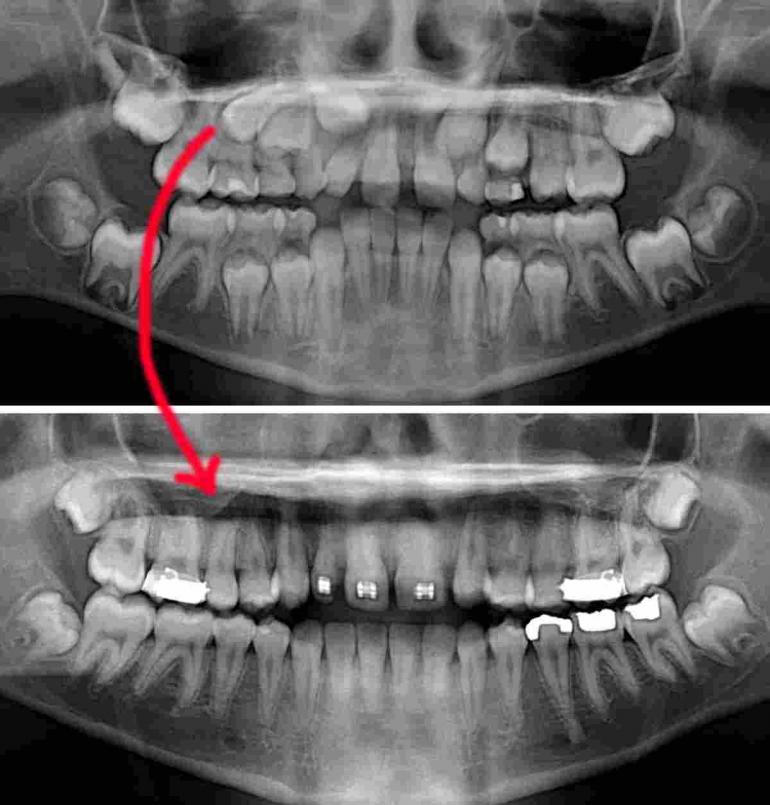
Impacted canine surgery cost
The surgical procedure usually costs between $500 to $1500 based on the surgeon and the difficulty of the tooth.
At iSmile Specialists, we do NOT charge extra for the surgery if you get the braces here. Call us for details 281-249-9999
Impacted teeth and canine Before and After
Here I will share with you a few cases that I have treated since 2005.
Case #1: This patient has an impacted central incisor with a blocked upper canine. The canine was moved back to its place and the central incisor was brought down with braces and surgery. Treatment time: 32 months.
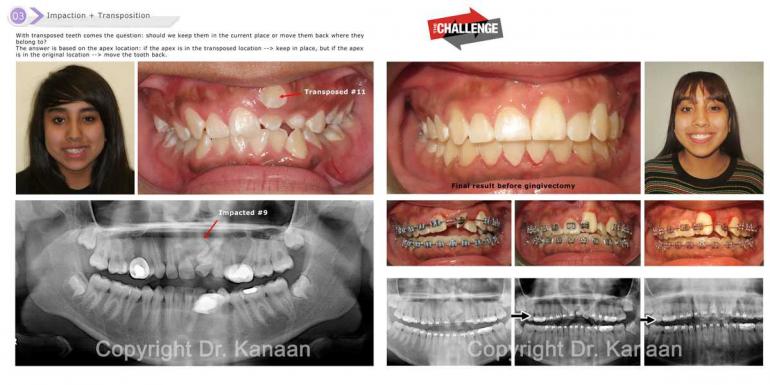
Case #2: As we said earlier, impacted teeth can cause tooth damage and this is what happened here when the upper right impacted canine caused damages to the two adjacent teeth.
Treatment included impacted canine surgery and a mini implant to move the canine away from the root of adjacent teeth.
After the impacted canine was in a safe position, we started braces and finished the case in 23 months.
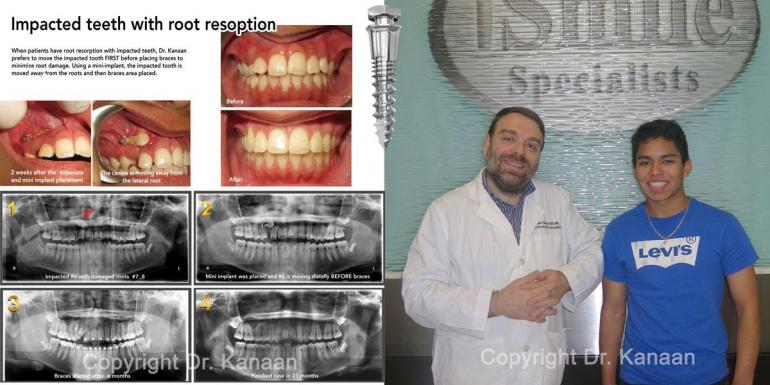
Send me an e-mail for any questions
